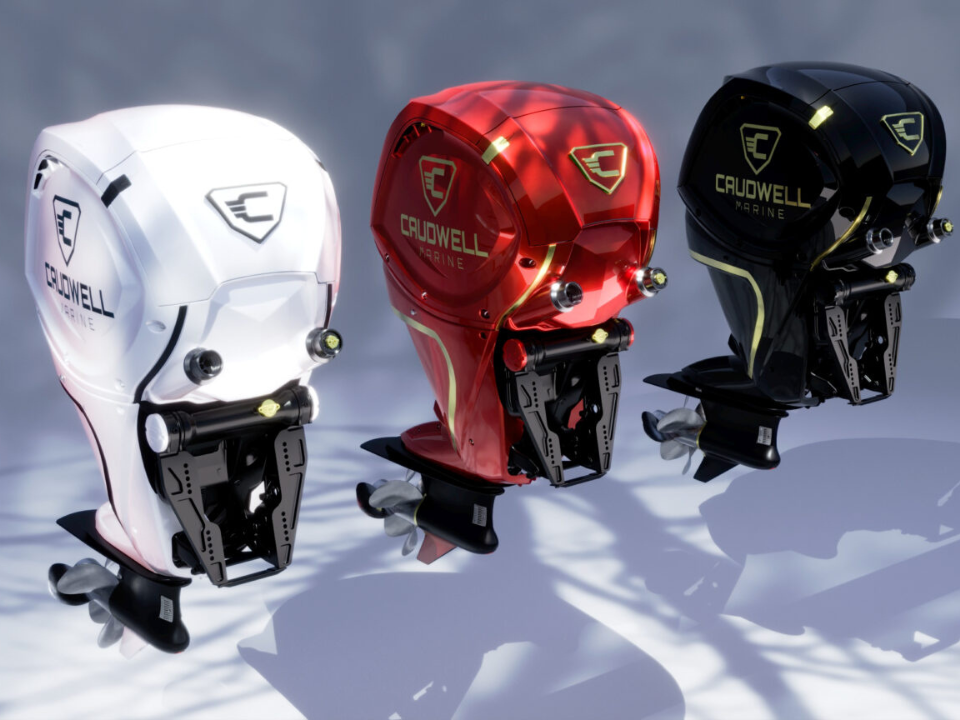The Diesel Outboard Market Is Growing for a Reason
A recent report highlighted in Industry Today projects that the global diesel outboard market will grow from 1.94 billion US dollars in 2024 to 2.56 billion by 2032. While that growth may appear measured, it reflects a deeper and more significant change in the marine industry.
What we are seeing is not just a market recovery or short-term spike. This is a shift in how operators think about propulsion. From commercial workboats to government fleets and offshore logistics, diesel is becoming the propulsion of choice for those who value durability, fuel efficiency and long-term performance.
At Caudwell Marine, this comes as no surprise. We have spent years listening to operators, studying the practical demands of real-world use and engineering the AX300 Diesel specifically to meet those needs.
Understanding the Growth: Beyond the Numbers
The diesel outboard market is not trying to compete with petrol in the leisure market. Instead, its growth is being driven by operators who need engines that work harder, last longer and cost less to run over time.
As the Industry Today article outlines, demand is strongest in sectors such as defence, commercial transport and offshore operations. These are environments where downtime is expensive, safety is critical and total cost of ownership matters just as much as upfront price.
This is not just a product trend but a reflection of a wider change in buyer behaviour. Fleet managers, engineers and procurement teams are now looking beyond basic criteria and are assessing engines based on duty cycle, maintenance requirements, and fuel strategy.
This is exactly where diesel begins to stand apart.
Why the Diesel Outboard Market Is Gaining Ground
Diesel offers several inherent advantages that are now aligning with the priorities of serious operators. In particular:
Cleaner operation with HVO. The AX300 is fully compatible with hydrotreated vegetable oil, a renewable diesel alternative that can significantly reduce emissions without requiring infrastructure changes. This allows operators to make measurable sustainability gains using existing systems.
Fuel efficiency under load. The AX300, for example, can deliver up to 50 percent fuel savings compared to a comparable 300hp petrol outboard. This is especially true in high-load, long-running applications where petrol engines become far less efficient.
Reduced maintenance and longer service intervals. Operators spend less time and money servicing the engine and more time on the water doing the job.
Single-fuel policies. As the Industry Today piece notes, organisations such as the US Coast Guard are now testing diesel outboards as part of a broader move towards simplified, diesel-only operations. This improves logistics and safety and reduces refuelling complexity in the field.

Total Cost of Ownership: The Measure That Matters
One of the biggest shifts we are seeing is the way value is being measured. Purchase price still matters, but it is no longer the sole focus. The cost of running, maintaining and fuelling an engine over several years is now front and centre in buying decisions.
This is where the AX300 Diesel excels. It combines the ruggedness and torque of diesel with the efficiency, serviceability and innovation modern fleets expect. When fuel savings, reduced maintenance, longer lifespan and HVO capability are all factored in, the AX300 Diesel offers a compelling total cost of ownership story.
The Role of Caudwell Marine
The insights outlined in Industry Today echo what we have long believed. The diesel outboard market is not simply expanding, but it is evolving. Operators are demanding more from their engines, and their priorities are shifting towards performance, longevity and operational value.
At Caudwell Marine, we are not reacting to these changes. We have been working alongside operators in commercial and defence sectors for years, using their input to shape a product that reflects real-world needs. The AX300 was built with purpose, from the ground up, to meet this new standard in marine propulsion.
